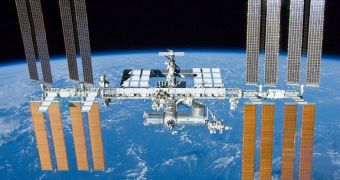The six-astronaut crew aboard the International Space Station now has an additional piece of hardware for producing water aboard the orbital facility, which was activated only recently.
With the new instrument, concerns about water availability have decreased aboard the space lab, where astronauts are heavily dependent on recycled water and shipments from Earth in order to survive.
The new system relies heavily on the principles set forth by scientist Paul Sabatier, who won the 1912 Nobel Prize in Chemistry for his work. The new hardware is called the Sabatier system in his honor.
It works by processing byproducts obtained from the Oxygen Generation System and the Carbon Dioxide Removal Assembly aboard the ISS, and it is capable of producing as much as 530 gallons of water per year, NASA says in a press release.
“This is an important step forward in NASA's commercialization endeavors and shows how successful private industry can be at providing solutions on its own,” explains NASA official Bill Gerstenmaier.
“The ability to produce this water will be important for sustaining space station operations once the shuttle is retired,” adds the expert, who is based at the NASA Headquarters, in Washington DC.
He is the associate administrator for Space Operations at the American space agency. Gerstenmaier says that the new system was installed in the week of October 11, and integrated into the station's Water Recovery System (WRS).
The system was first started and used on October 22, when it successfully completed an 8-hour run.
“The Sabatier process uses a nickel catalyst to interact with hydrogen and carbon dioxide at elevated temperatures and pressures to produce water and methane,” NASA explains of how the system works.
The water is naturally retained inside the station, but the methane gas is pushed outside into space. What is unique about the new system is that it uses hydrogen gas that is produced while generating oxygen for the crew.
Before the new system started, the chemical was also vented as excess gas, as was the carbon dioxide that the crew produced when breathing. Now, the two are combined in the Sabatier system to produce additional water.

 14 DAY TRIAL //
14 DAY TRIAL //